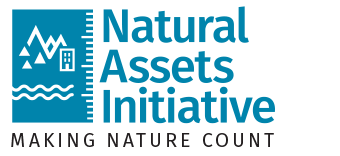For background on the project, see our previous update in The Journey So Far.
Land, Water & Natural Resources – Update on NAM and Reconciliation
Great news from Manitoba: the Land, Water and other Natural Resources Inventory — part of collaborative efforts between the Southern Chiefs’ Organization and the mayors and reeves of the Winnipeg Metropolitan Region (WMR) — is now complete!
Partners and MNAI, with support from the David Suzuki Foundation, have created an accessible inventory and dashboard of wetlands, lakes, rivers, grasslands, forests, and agricultural lands. The inventory – which is typically a first step in broader natural asset management efforts, will be able to support a wide range of land use changes and nature protection.
There are already many inventories in Canada that incorporate primarily Western or technical approaches, and there is even a forthcoming national standard to accelerate this process.
What makes the Land, Water, and other Natural Resources Inventory unique is that it’s the first to begin interweaving First Nations worldviews, knowledge, and perspectives with technical approaches.
The inventory was presented at the 10th Collaborative Leadership Initiative (CLI) meeting to over 110 attendees, including representatives from 25 First Nations and municipal governments. The CLI, facilitated by the Centre for Indigenous Environmental Resources (CIER), was established six years ago as a dedicated, government-to-government approach to advance shared solutions to nature through reconciliation.
Today marks the 10th meeting of the Collaborative Leadership Initiative for a half day forum #OurSharedFuture - great leaders working together since 2017 #CLIManitoba2023 @colleen_sklar @smith4lag @pharethoughts @RBrooke pic.twitter.com/joezx4CVcR
— Winnipeg Metropolitan Region (@WinnipegMetro) March 17, 2023
Like natural asset management, reconciliation is continuous
Managing natural assets is never a one-and-done solution. It is a continuously adapting process as new data, priorities, and realities of the landscape affect the needs of communities. In much the same way, reconciliation between settler and First Nations, Métis, and Inuit governments requires ongoing attention and investment.
Looking ahead and recognizing our role in upholding UNDRIP and strengthening NAM, learnings from this project will be reflected and improved through MNAI’s initiatives, including an initiative in BC that seeks to develop similar inventories in that province.
In terms of the inventory development itself, it was clear that the CLI was vital in Manitoba to advancing natural asset management (NAM) due to its inclusion of both Indigenous and non-Indigenous partners, its regional scope and, ultimately, that the initiative exists specifically to tackle complex issues surrounding the context of reconciliation. There could be many future synergies between NAM and CLI.
If both NAM and reconciliation are to progress at the pace of climate change, partners must reject the “traditional” in exchange for collaboration, respect, and commitment to a shared future. Systemic-level change demands progressive action. As the CIER says, “the status quo isn’t good enough”.


